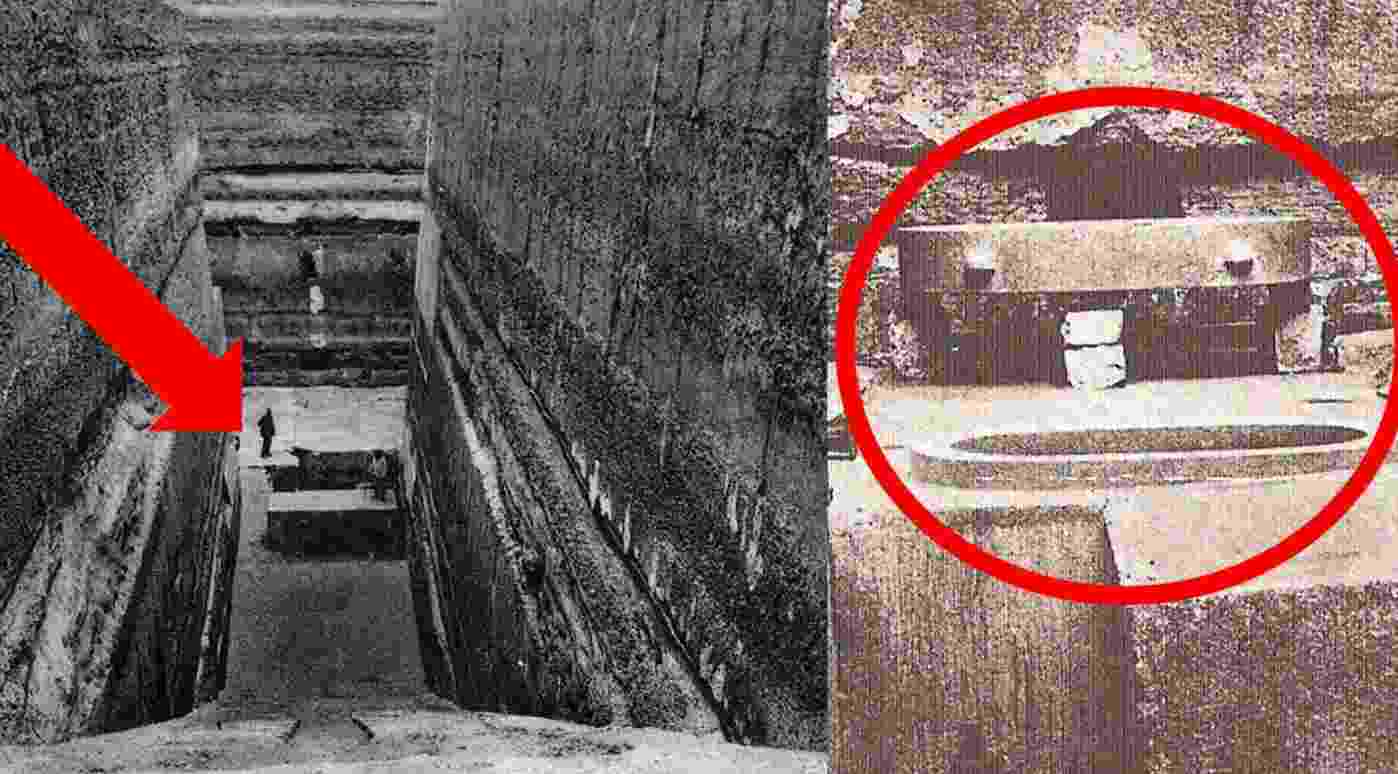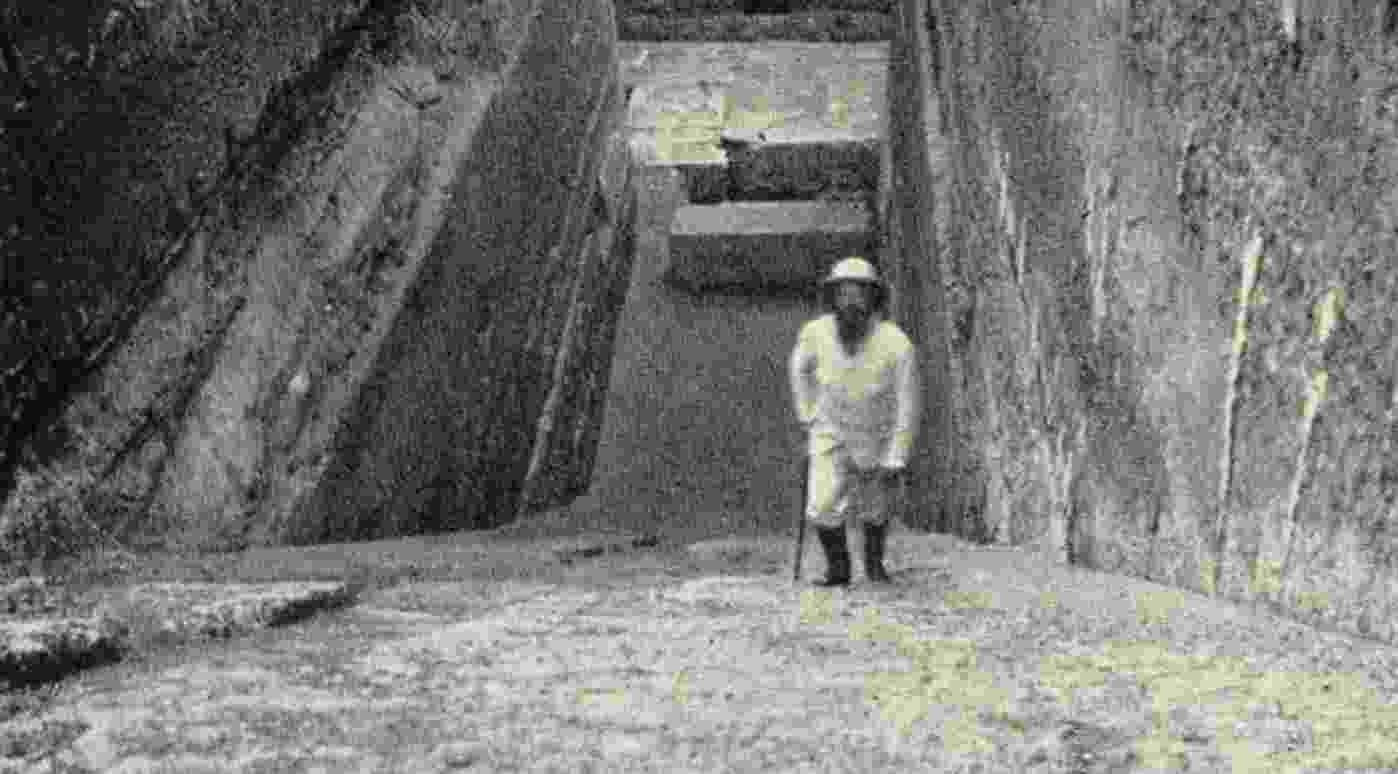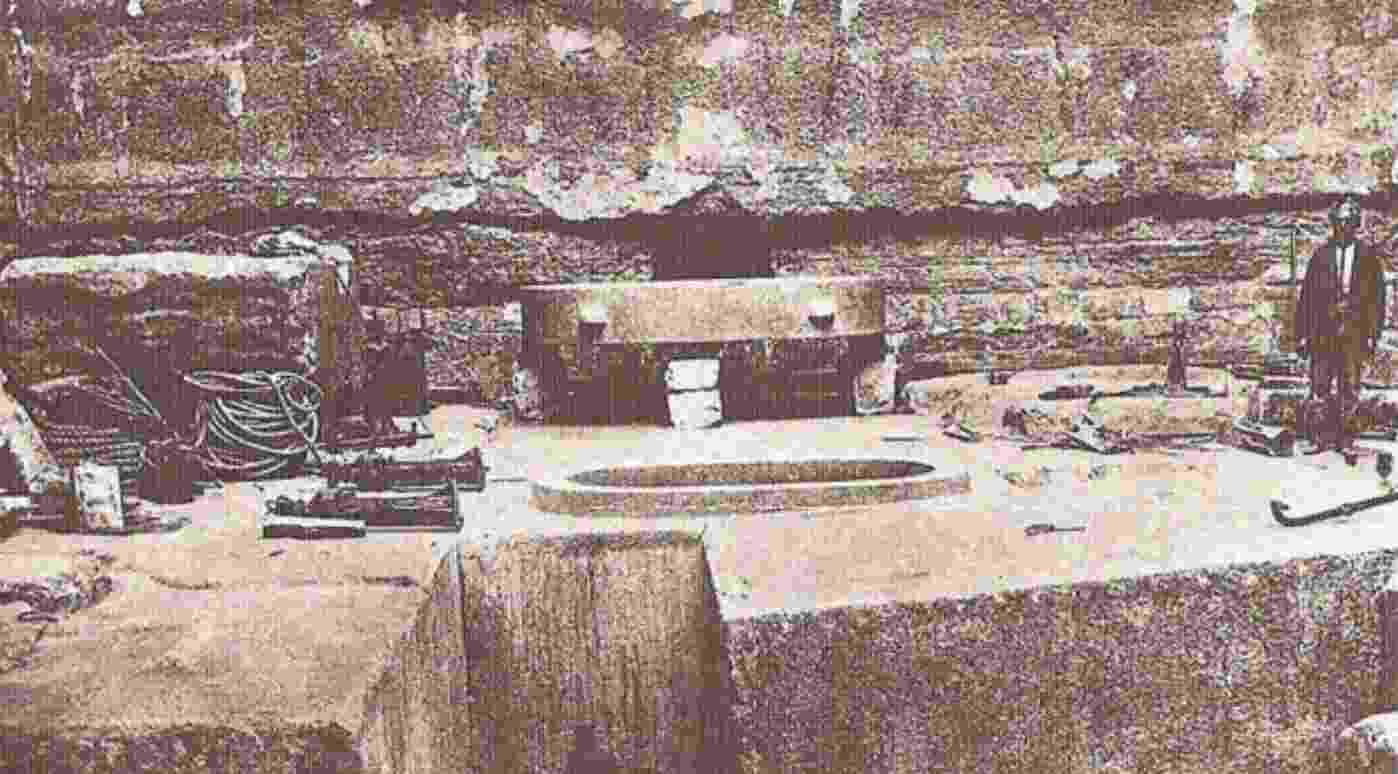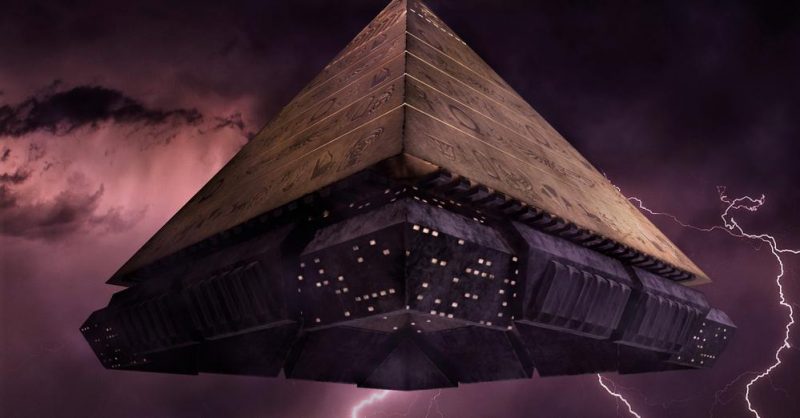Most people don’t know that near the famous trio of pyramids in Giza, Egypt, there are two other pyramids of which only their foundations remain.

One of them is called the unfinished North Pyramid of Zawyet El Aryan, almost 5 km southeast of Giza; the other, smaller, is called Layer Pyramid.
Archaeologists think that they are unfinished pyramids, but at UfoSpain we believe that they were actually destroyed a long time ago.
We looked on the internet for information about the unfinished North Pyramid of Zawyet El Aryan, and found that the information was often wrong and misleading.
The pyramid is not unfinished, the underground structure is not a burial chamber or tomb, and the granite bathtub they found is not a sarcophagus.
We always like to go to the original source, which, in this case, is the Italian archaeologist Alessandro Barsanti, who found the remains of the pyramid in the early 1900s and began excavating in 1904.
His original report, in the French language, contains descriptions of the underground corridors, the chamber, and the curious oval bathtub. His description of this stone vat and how it was sealed and protected is truly remarkable.
Although Barsanti was impressed by the high quality of the stone work of the descending shaft and the open room at the bottom, no one else investigated this monument.
Since 1964, the pyramid has been placed in a restricted military area, and further excavation is prohibited.
The entire base of the North Pyramid of Zawyet El Aryan is cut from the local limestone rock. Its base is 200 meters, which would make it almost as tall as the Great Pyramid of Giza. A large descending tree was cut from this rock leading to an underground chamber.
Archaeologists still attribute this interior space to a funerary function, where the pharaoh was supposed to be buried, despite the fact that all the stone chests (other than sarcophagi) found in the pyramids were empty, and all the pharaohs and aristocrats They were buried in the Valley of the Kings.
As some researchers have pointed out, the construction of the pyramids and their interior design show that they were technological devices intended to harvest energy, from the earth and the cosmos, and to use this energy probably for multiple purposes.

Some people say that the pyramid builders (in Atlantean times) used liquids and gases inside the pyramids, which is interesting because of the granite vat found at the base of Zawyet El Aryan’s North Pyramid. .
Others say that the underground veins of water produced electricity and sound vibrations that were amplified by the construction of the pyramid.
At this time we don’t know for sure how the pyramids worked because the Atlanteans used a very different technology, and the remains were ruined.
Yes, most of the pyramids were built over twelve thousand years ago during the Atlantean period. After their disappearance and the destruction of the coastal lands by huge tsunamis, much of what was in Egypt was left in ruins.
After several thousand years, the dynastic Egyptians settled there, adopting the pyramids and all that they found, into their own culture.
For example, we see that some of the dynastic temples, built with small stones, were built on large blocks of stone weighing several tons, which were the remaining base of the Atlantean buildings.
What has also been pointed out is that at one point, probably when the Atlantean civilization came to a catastrophic end, there was a malfunction in the pyramid technology and explosions occurred.
There are other nearby pyramids that show signs of explosive destruction with stone blocks scattered around them. One of them is the Bent Pyramid of Dashur, which has one corner dismantled as if by an explosion.
The northern pyramid of Zawyet El Aryan may also have been blown up, as many stones were found scattered around it.
The reason why only the base remains today is easy. In the last thousands of years, people nearby have used the stones to build their own houses.
Why go stone mining, when you can use already cut stones from old monuments? Apparently, when the Roman Empire occupied Upper Egypt, they used this monument as a stone quarry.
Even in recent times, the stones were used by the local population as building materials.
What remains today of the North Pyramid of Zawyet El Aryan, however, is still very interesting, complete with a mystery that also hints at unusual and ancient technology.
Italian archaeologist Alessandro Barsanti began excavating the underground structure of the North Pyramid of Zawyet El Aryan in 1904. He was the only one to ever examine this structure.
He left us some very interesting descriptions. The original report of him was published in the Annales del Service des Antiquités de Egypte, tome VII , of the Institut Français d’Archéologie Orientale du Caire , in 1906.
Although not much remains of the North Pyramid of Zawyet El Aryan, we can point out some characteristics that make it not a tomb but a technological construction, the purpose of which is still unknown.

The bathtub is the most interesting of all. Why cut it out of one of the granite blocks of the pavement? It had a perfectly fitted granite top on top, and was polished like a mirror on the inside.
These features create a very strong link to the Serapeum’s underground granite coffers. These oversized chests, also mislabeled tomb ( for the bulls! )..
They had perfectly fitting tops, and their inside walls were not only level to a fraction of an inch and at perfect ninety degree angles, they were also polished like a mirror.
By the way, the Serapeum arks cannot be manufactured or duplicated by our modern technology.
So why was it necessary for the bathtub to have a smooth interior mirror? And why was it oval, which is more difficult to make than a simple rectangular box?
We imagine that it was after the destruction of the pyramid (by an explosion), that the caretakers sealed the tub with a layer of lime and limestone blocks.
They could also have filled the chamber and corridor with stones and rubble. It is quite possible that these people did not ultimately survive the catastrophe, and the vat thus sealed remained so until Barsanti discovered it again.
There could be more underground passages yet to be discovered, as Barsanti noted that after heavy rain, “the shaft was flooded to a height of three meters. Around midnight, the water dropped abruptly by about a meter.”
We can only explain this phenomenon by assuming that it is submerged in an underground tunnel, large enough to hold 380 cubic meters of water.
One wonders why the Egyptian authorities are not interested in further excavations. They are always eager to discover a hidden tomb full of treasures..
Oh! And why was he placed in a military zone? There are still many mysteries to be solved. What do you think? Leave your comment below.









